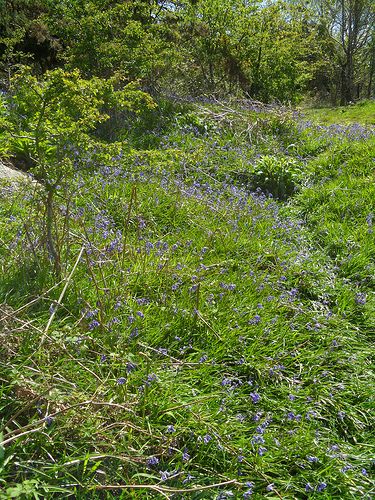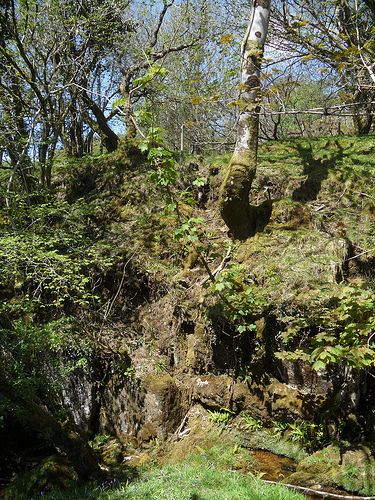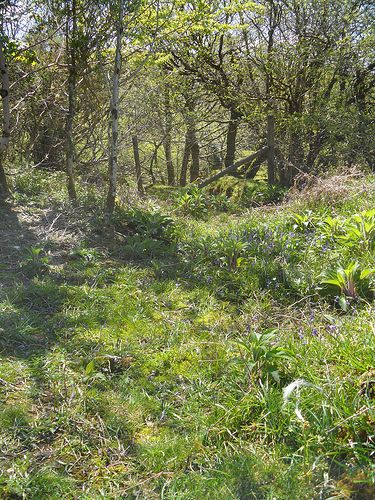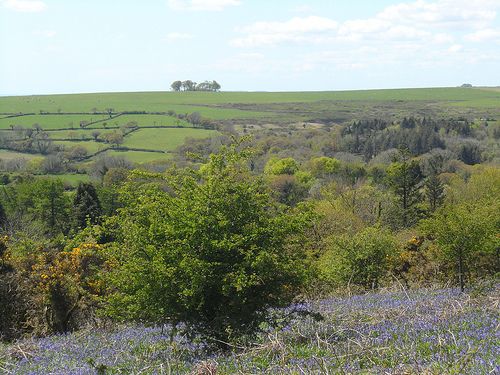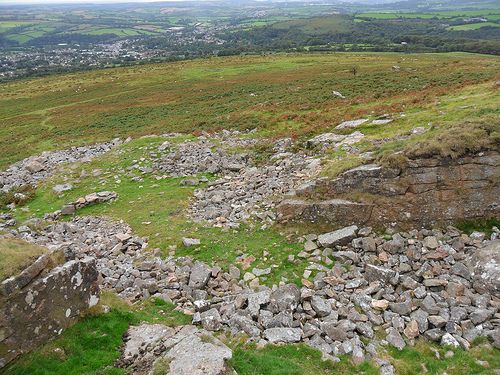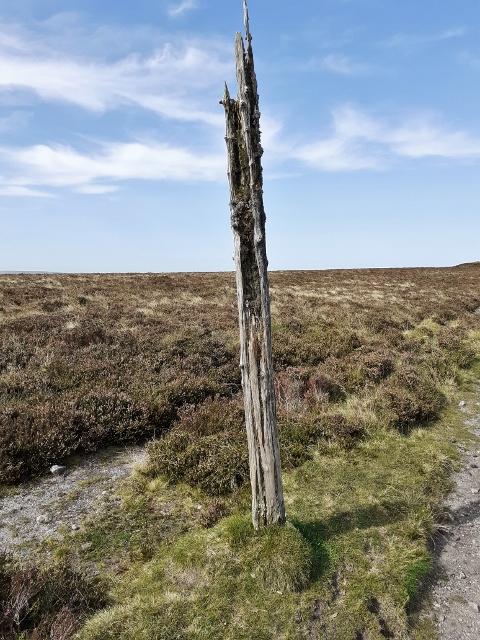Harford is a small scattered village in the valley of the river Erme 2 ½ miles north of Ivybridge and consists of mainly outlying farms.
| Name | Occupation | Posted from | Until |
|---|---|---|---|
| Sergeant Ferrer Lawton Loveridge | Farmer |
19 Nov 1940 | 03 Dec 1944 |
| Captain Alwyn Philip William Robertson | Farmer |
01 Aug 1940 | 01 Jun 1943 |
| Private Roy Neale Howell | At school |
30 Sep 1941 | 24 Nov 1943 |
| Private Howard Daniel Howell | Company director of timber merchant |
18 Aug 1942 | 03 Dec 1944 |
| Private Harry Irvin Lobb | Farm labourer |
09 Aug 1940 | 16 Jan 1943 |
| Private James Hony Snell | Secretary |
08 Oct 1942 | 03 Dec 1944 |
The OB was in a field called Sentries, opposite, and the other side of The Butterbrook from Torr Rocks. In a rough and scrubby field next to open moorland (Dartmoor).
The Butterbrook is a delta of small streams leading from what is now a reservoir, supplying some outlying farms with their water supply.
The ground has a thick coverage of vegetation in one small area where there is a deeper pit. The field has general grass covering but does consist of many gorse bushes which may well have covered the area in the past.
The larger depression in the ground is approximately 20 foot by 10 foot ending in the south with a 9 inch thick raised strip which follows the natural contour of the land. The other side of this strip is a smaller, deeper pit. Leading from this is a vague thin depression in the ground, exiting as a disturbed area high in the ravine of The Butterbrook.
The lands slopes north east to south west in a gradual decline, getting steeper after the OB location. There is a vertical, but easily climbable drop from the exit of the escape tunnel down into the Butterbrook of approximately 15 foot. The OB was orientated north to south.
Roy Howell remembered the OB as being very well made and completely camouflaged on the surface. It was entered through a trap door and a ladder took you down into it. He recalled bunk beds, food, ammunitions and explosives. He thinks it would have been quite possible to live there for some time.
There are no remains from it being blown up therefore we consider it may have been removed unless any further information comes to light. The structure could have been made use of around the farm.
Jimmy Darling, the gardener at Lukesland, once claimed to have been in the area of the OB and heard someone say “It's alright men, the coast is clear”. Looking over some rocks he saw the men emerge from a hole in the ground.
Roy recalled going to Harford Moor, near Western Beacon on Dartmoor as a look out. He couldn't remember a structure on the site but there are various cairns, small quarries and typical Dartmoor rocky out crops that they could have utilised. Nearby Torr Rocks is made up of a mass of granite outcrops that, knowing the area, would have made a fabulous lookout and hiding point.
The area of the Cornwood Patrol's OB would have been easily visible and possibly communicable.
Harford Patrol
Possible targets would include the main A38 leading east out of Plymouth and the various railway viaducts of the main train line leading out of Plymouth linking to the rest of the country.
Near to open moorland the threat of gliders landing was prevented by the placement of many poles over the Moors. Some still remain in places. Harford Patrol would have been ideally placed to watch for enemy landings.
Training took place with the other Patrols of Group 3
It is assumed they were issued with the standard kit, arms and explosives.
The Howell family owned Lukesland Estate and the other Auxiliers lived or worked on the Estate. Lukesland is still owned by the family and the gardens are open to the public at certain times.
Lukesland had two German POW's and was a Red Cross Depot during the war and had a constant stream of service men and women staying there.
TNA ref WO199/3391
1939 Register
Hancock data held at B.R.A
Twas as Twas by Gillian Venables
Auxilier Alec Rogers (Ugborough Patrol)
Auxilier's son John Howell
The kind help of Noel Thornton and Mike Barber with their local and tactical knowledge.
